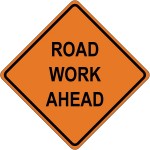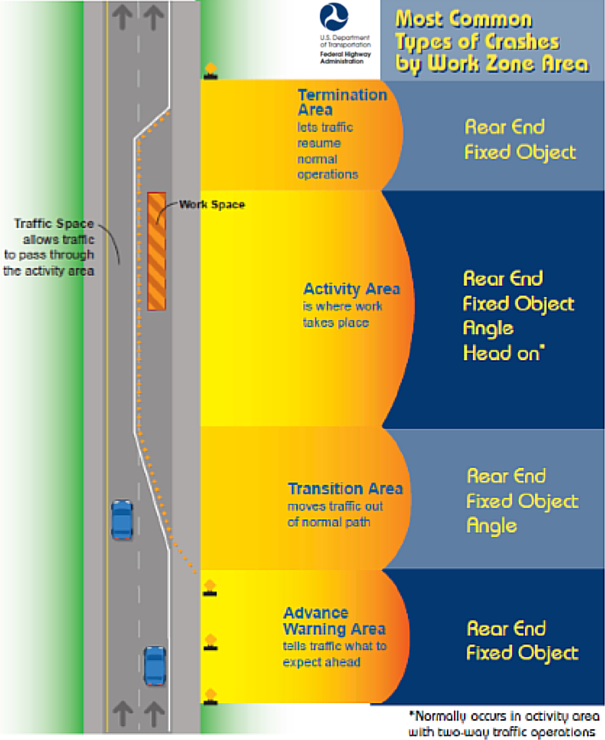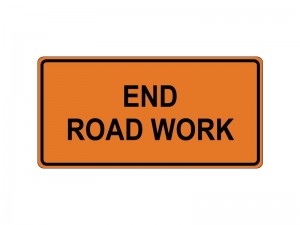How would you feel if someone drove their vehicle through your office?
This must be how construction workers feel on a daily basis during the spring,  summer and fall months. Motorists tend to view the orange, diamond-shaped warning signs with black lettering as a potential delay on their way to and from work. However, work zones are so much more than a minor traffic inconvenience; they are a construction worker’s office. And motorists, meanwhile, need to be alert and prepared for the unexpected when they encounter and drive through a work zone.
summer and fall months. Motorists tend to view the orange, diamond-shaped warning signs with black lettering as a potential delay on their way to and from work. However, work zones are so much more than a minor traffic inconvenience; they are a construction worker’s office. And motorists, meanwhile, need to be alert and prepared for the unexpected when they encounter and drive through a work zone.
According to the Federal Highway Administration (FHWA), rear-end crashes are the most common type of work zone crashes. Too often, motorists are not paying attention to the flow or speed of traffic in front of them. Traffic in a work zone can be unpredictable because the traffic patterns are ever changing from an upcoming lane closure, a shift in the traffic pattern or a flagger directing oncoming traffic.
FHWA has recently reported:
![]() Drivers are the most frequent fatality in a work zone crash.
Drivers are the most frequent fatality in a work zone crash.
![]() During the past 5 years, more than 4,400 people have died (85% of which were either the driver or passenger)
During the past 5 years, more than 4,400 people have died (85% of which were either the driver or passenger)
![]() 200,000 people have been injured in work zone crashes.
200,000 people have been injured in work zone crashes.
![]() Most of these fatalities involve working-age adults.
Most of these fatalities involve working-age adults.
![]() The majority of crashes occurred on roads with speed limits > 50
The majority of crashes occurred on roads with speed limits > 50

Driver awareness and attentiveness are the keys to safe travel through a work zone. The following safety guidelines have been put in place to protect both the driver and the highway workers.
Work Zone Safety for Drivers:
1. Obey the speed limit signs – Reduced speed limits are often posted leading up to and throughout the work zone.
2. Turn on your headlights – All motorists are required to travel with their headlights on in a work zone when there is a “Turn on Headlights” sign, even during the day.
3. Stay alert and minimize distractions – Resist the urge to pick up your cell phone or dig through your bag for snack. Never take your eyes off the road.
4. Maintain a safe travel distance between the vehicles in front of you – Don’t tailgate.
5. And last but not least, be patient and courteous.







